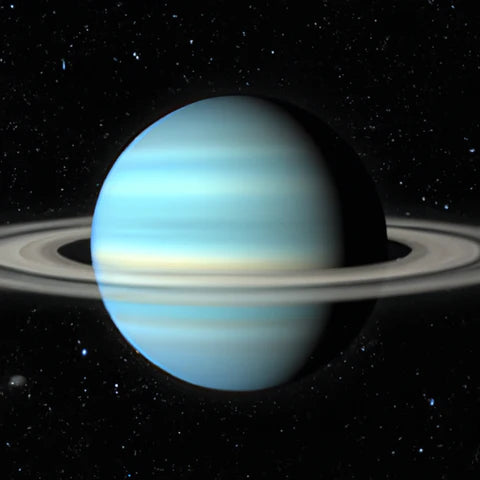
Discovering Uranus in November's Night Sky
A New Star in the Night Sky
Move over Saturn, there's a new star in the night sky this November. The latest image from NASA's Webb Telescope has brought Uranus into the spotlight, revealing a striking ring system and a distinct white polar cap.
Explore the Enigmatic World of this Extraterrestrial Planet.
The Unique Rotation of Uranus
Uranus is often depicted with polar caps at the top or bottom, but its unusual rotation at a near 90-degree angle presents a different view. This orientation makes its polar cap appear on the right side, a fascinating quirk that sets it apart in our solar system.
Exploring Uranus's Mysteries
Delving into the history, exploration, and future missions aimed at uncovering the secrets of Uranus. Embark on a captivating journey through the rich history, remarkable exploration, and visionary missions dedicated to unraveling the enigmatic mysteries of Uranus.
Uranus's Ring System Unveiled
Most are familiar with Saturn and its iconic rings, but Uranus also boasts an impressive ring system. Discovered telescopically by William Herschel in 1781, Uranus was the first planet found using a telescope. Its rings remained a secret until 1977 when they were uncovered by an infrared telescope aboard a military cargo plane.
Advancements in Uranian Exploration
Since this groundbreaking discovery, observatories worldwide have been piecing together the mysteries of Uranus and its rings. The recent capture by the JWST space observatory, using just 12 minutes of exposure in two filters, has provided an unprecedented view of 11 out of the planet's 13 rings and several atmospheric features. Despite these advances, Uranus still retains a sense of mystery, challenging scientists to uncover more.
The Future of Uranian Science
Planetary scientists are now focusing on Uranus, as recommended by a report from the National Academies of Sciences, Engineering, and Medicine. A major planetary science spacecraft mission centered on Uranus could illuminate our understanding of this icy giant and others like Neptune.
Observing Uranus
Viewing Uranus in November
For those eager to witness Uranus's beauty, mid-November offers an optimal viewing opportunity, especially around its 'opposition' phase. During this phase, Uranus reflects sunlight off its icy atmosphere, shining brightly in the night sky.
How to Spot Uranus
To spot Uranus, look overhead just after midnight on November 13. Positioned about halfway between the dazzling Jupiter and the subtle radiance of the Pleiades star cluster (M45), Uranus might resemble a bright blinking star. However, its distinct blue-green hue, best viewed through binoculars or a telescope, reveals its true planetary nature.
Learn More About Uranus
For more fascinating insights into space exploration, explore our other articles to keep up to date with the latest space news! And for those interested in our space themed clothing check out jwst.shop for more!


